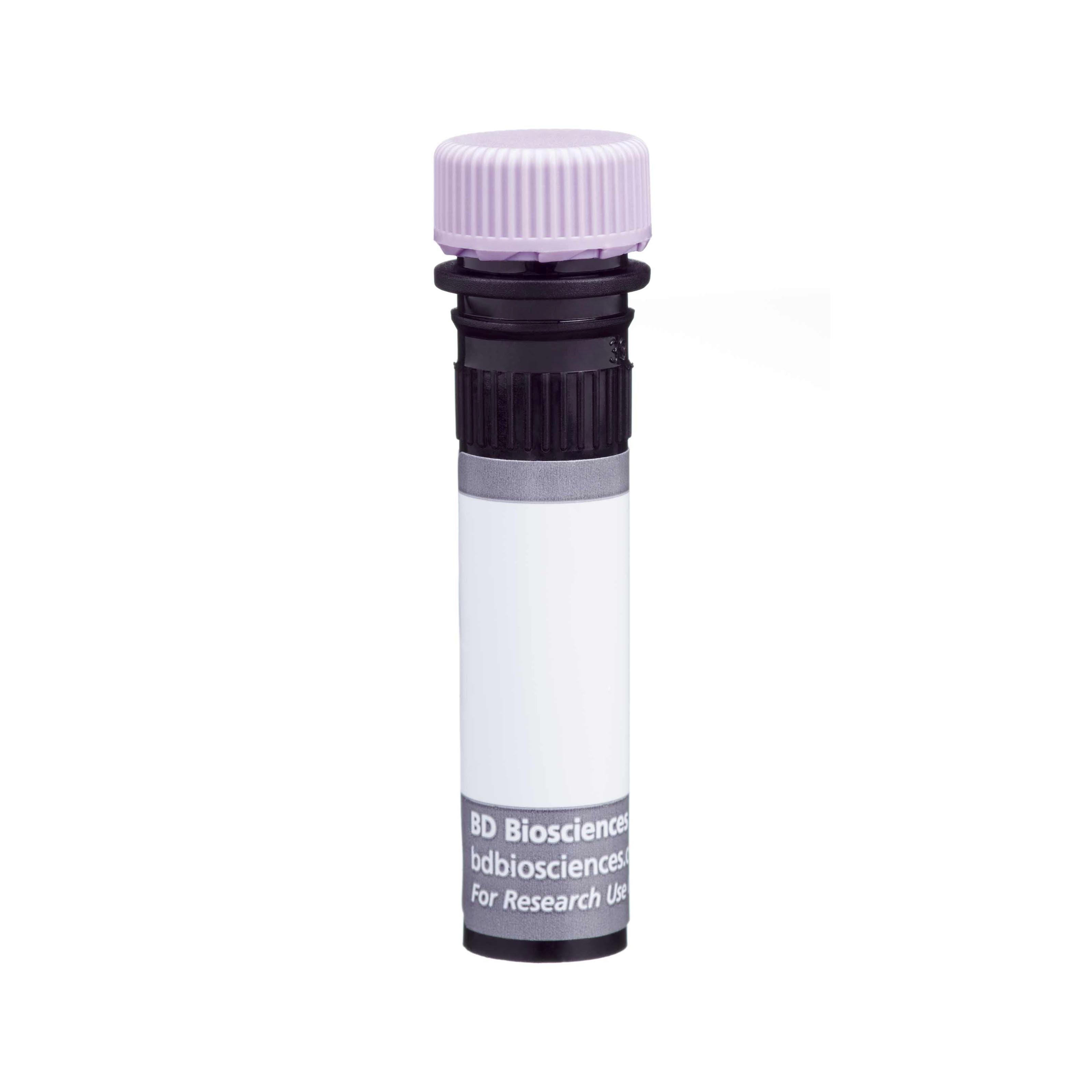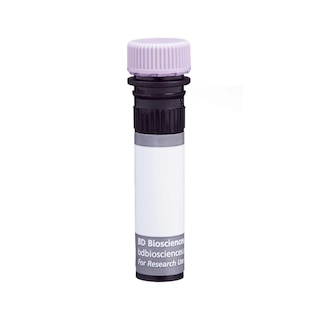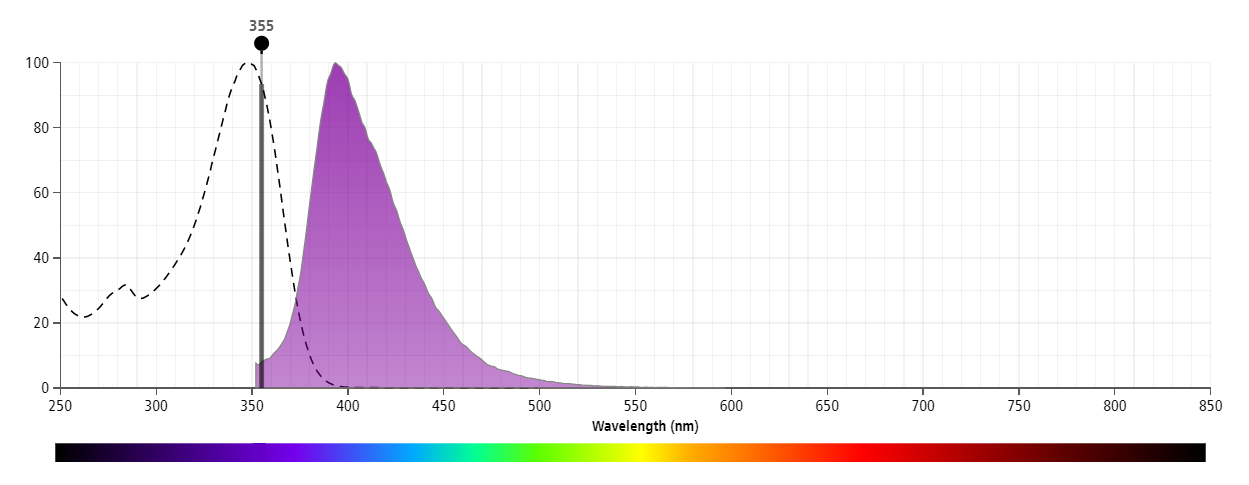Old Browser
Looks like you're visiting us from {countryName}.
Would you like to stay on the current country site or be switched to your country?




Flow cytometric analysis of CD31 expression on human peripheral blood leucocyte populations. Whole blood was stained with either BD Horizon™ BUV395 Mouse IgG1, κ Isotype Control (Cat. No. 563547; Left Panel) or BD Horizon BUV395 Mouse Anti-Human CD31 antibody (Cat. No. 565290; Right Panel). Erythrocytes were lysed with BD FACS™ Lysing Solution (Cat. No. 349202). Two-parameter flow cytometric contour plots showing the correlated expression of CD31 (or Ig Isotype control staining) versus side-light scatter (SSC-A) signals were derived from gated events with the forward and side light-scatter signals of intact leucocyte populations. Flow cytometric analysis was performed using a BD™ LSR II Flow Cytometer System.


BD Horizon™ BUV395 Mouse Anti-Human CD31

Regulatory Status Legend
Any use of products other than the permitted use without the express written authorization of Becton, Dickinson and Company is strictly prohibited.
Preparation And Storage
Recommended Assay Procedures
For optimal and reproducible results, BD Horizon Brilliant Stain Buffer should be used anytime two or more BD Horizon Brilliant dyes are used in the same experiment. Fluorescent dye interactions may cause staining artifacts which may affect data interpretation. The BD Horizon Brilliant Stain Buffer was designed to minimize these interactions. More information can be found in the Technical Data Sheet of the BD Horizon Brilliant Stain Buffer (Cat. No. 563794/566349) or the BD Horizon Brilliant Stain Buffer Plus (Cat. No. 566385).
Product Notices
- This reagent has been pre-diluted for use at the recommended Volume per Test. We typically use 1 × 10^6 cells in a 100-µl experimental sample (a test).
- An isotype control should be used at the same concentration as the antibody of interest.
- Source of all serum proteins is from USDA inspected abattoirs located in the United States.
- Caution: Sodium azide yields highly toxic hydrazoic acid under acidic conditions. Dilute azide compounds in running water before discarding to avoid accumulation of potentially explosive deposits in plumbing.
- For fluorochrome spectra and suitable instrument settings, please refer to our Multicolor Flow Cytometry web page at www.bdbiosciences.com/colors.
- BD Horizon Brilliant Ultraviolet 395 is covered by one or more of the following US patents: 8,158,444; 8,575,303; 8,354,239.
- BD Horizon Brilliant Stain Buffer is covered by one or more of the following US patents: 8,110,673; 8,158,444; 8,575,303; 8,354,239.
- Species cross-reactivity detected in product development may not have been confirmed on every format and/or application.
- Please refer to www.bdbiosciences.com/us/s/resources for technical protocols.
Companion Products






The WM59 monoclonal antibody specifically binds to platelet endothelial cell adhesion molecule-1, (PECAM-1, PECAM1), which is also known as GPIIA', or EndoCAM. CD31 is a 130 kDa type I transmembrane glycoprotein that belongs to the Ig gene superfamily. CD31 has wide tissue distribution and is expressed on platelets, monocytes, granulocytes, NK cells, T cell subsets, and in high amounts on endothelial cells. CD31 functions as a vascular endothelial cell adhesion molecule and is involved in the transendothelial migration of leucocytes in inflammatory responses. It might be involved in thrombosis, angiogenesis, and wound healing. The WM59 appears to recognize an epitope proximal to extracellular domain 2 of CD31.
Clone WM59 also cross-reacts with peripheral blood platelets and leukocytes of baboon, and both rhesus and cynomolgus macaque monkeys. The staining intensity of WM59+ platelets is similiar to that observed with peripheral blood platelets from normal human donors. Lymphocytes, monocytes, and granulocytes react less with WM59 than normal human leukocytes.
The antibody was conjugated to BD Horizon BUV395 which has been exclusively developed by BD Biosciences as an optimal dye for use on a 355 nm laser equipped instrument. With an Ex Max at 348 nm and an Em Max at 395 nm, this dye has virtually no spillover into any other detector. BD Horizon BUV395 can be excited with a 355 nm laser and detected with a 379/28 filter.

Development References (6)
-
DeLisser HM, Newman PJ, Albelda SM. Platelet endothelial cell adhesion molecule (CD31). Curr Top Microbiol Immunol. 1993; 184:37-45. (Biology). View Reference
-
Fawcett J, Buckley C, Holness CL, et al. Mapping the homotypic binding sites in CD31 and the role of CD31 adhesion in the formation of interendothelial cell contacts. J Cell Biol. 1995; 128(6):1229-1241. (Clone-specific: Blocking, ELISA). View Reference
-
Lin G-X, Yang X, Hollemweguer E, et al. Cross-reactivity of CD antibodies in eight animal species. In: Mason D. David Mason .. et al., ed. Leucocyte typing VII : white cell differentiation antigens : proceedings of the Seventh International Workshop and Conference held in Harrogate, United Kingdom. Oxford: Oxford University Press; 2002:519-523.
-
Muller WA, Weigl SA, Deng X, Phillips DM. PECAM-1 is required for transendothelial migration of leukocytes. J Exp Med. 1993; 178(2):449-460. (Biology). View Reference
-
Schlossman SF. Stuart F. Schlossman .. et al., ed. Leucocyte typing V : white cell differentiation antigens : proceedings of the fifth international workshop and conference held in Boston, USA, 3-7 November, 1993. Oxford: Oxford University Press; 1995.
-
Vaporciyan AA, DeLisser HM, Yan HC, et al. Involvement of platelet-endothelial cell adhesion molecule-1 in neutrophil recruitment in vivo.. Science. 1993; 262(5139):1580-2. (Biology). View Reference
Please refer to Support Documents for Quality Certificates
Global - Refer to manufacturer's instructions for use and related User Manuals and Technical data sheets before using this products as described
Comparisons, where applicable, are made against older BD Technology, manual methods or are general performance claims. Comparisons are not made against non-BD technologies, unless otherwise noted.
For Research Use Only. Not for use in diagnostic or therapeutic procedures.
Report a Site Issue
This form is intended to help us improve our website experience. For other support, please visit our Contact Us page.